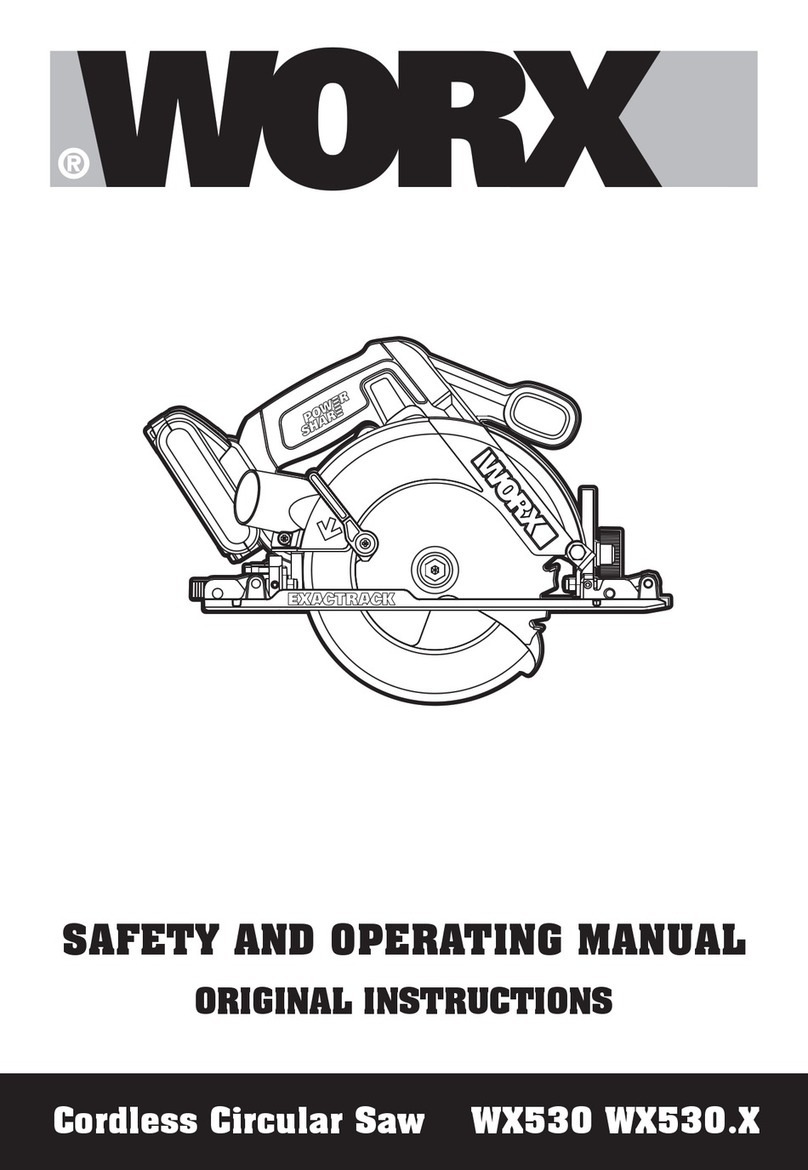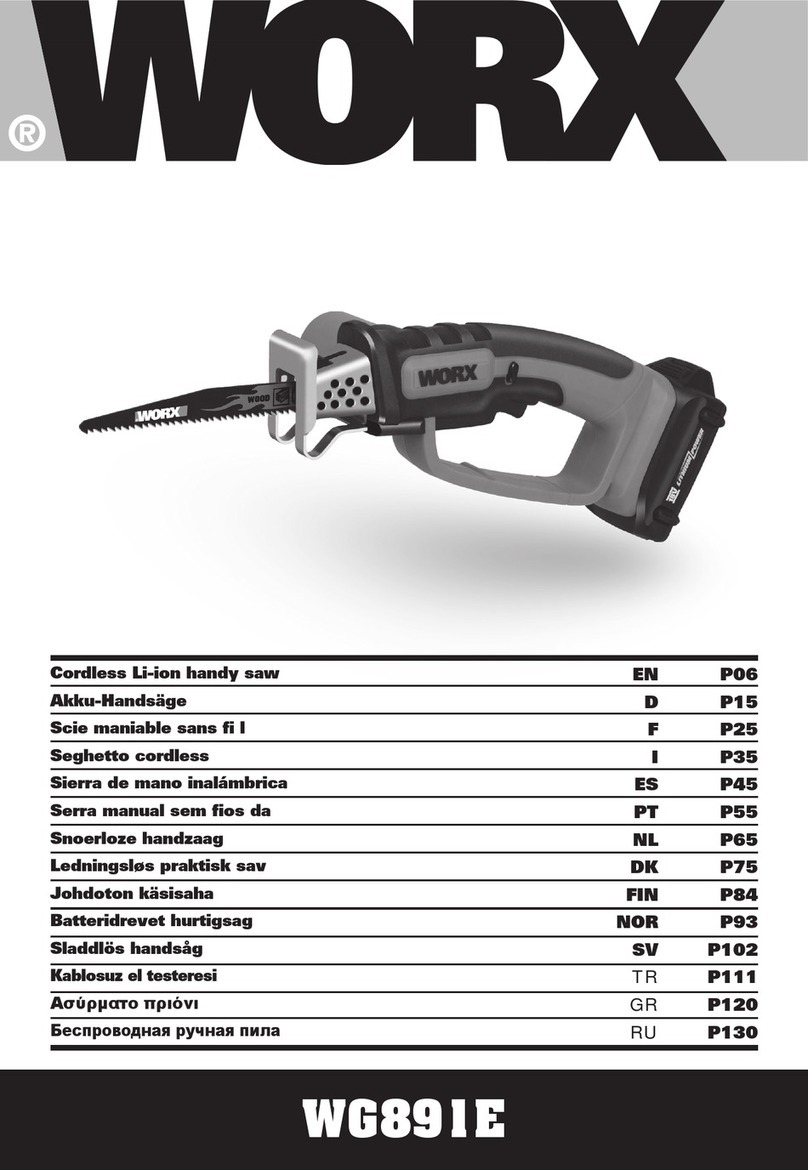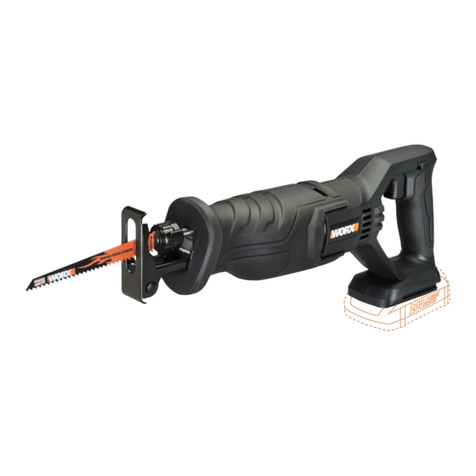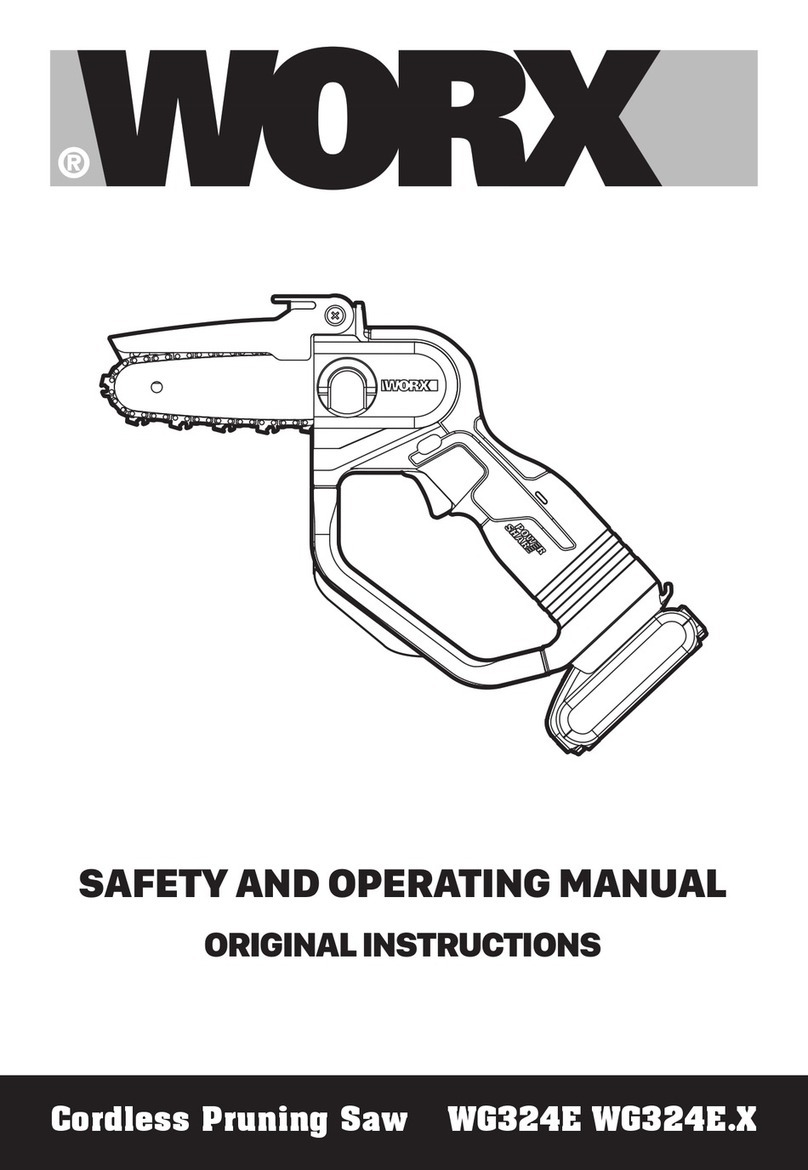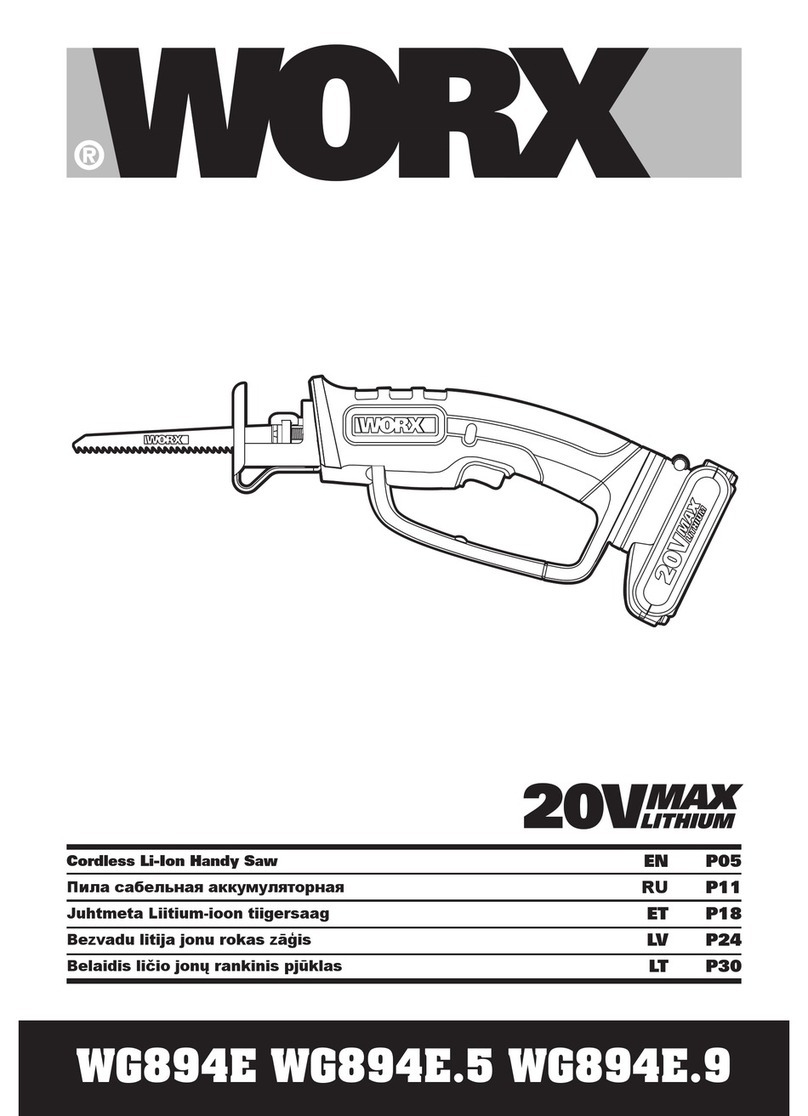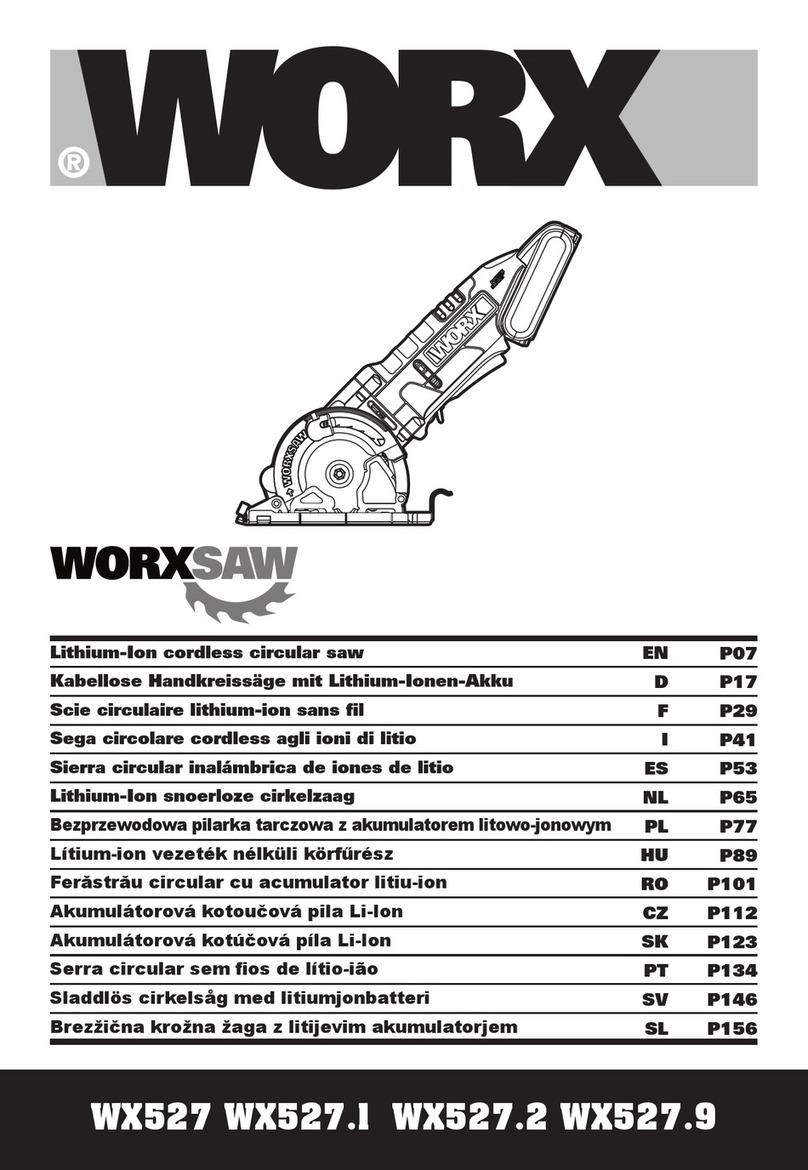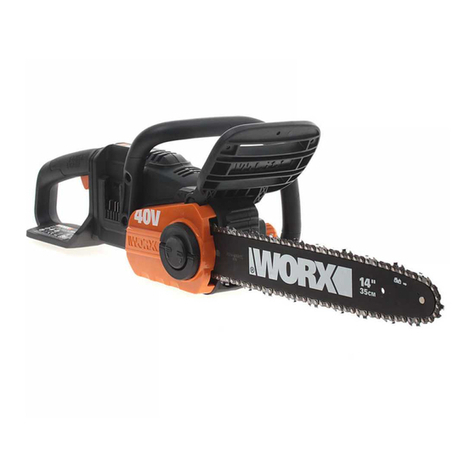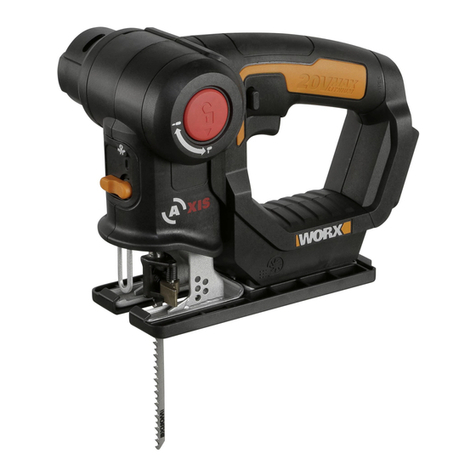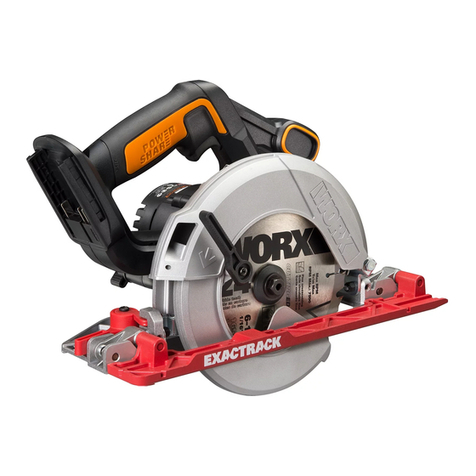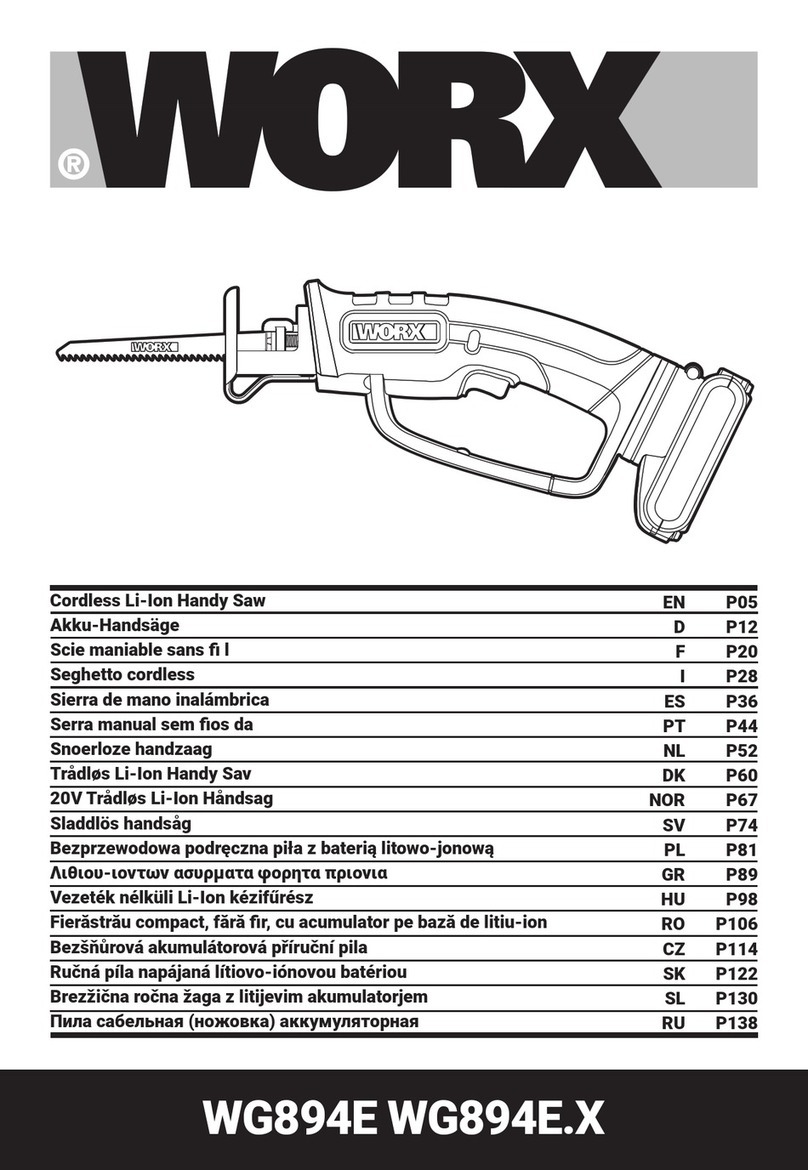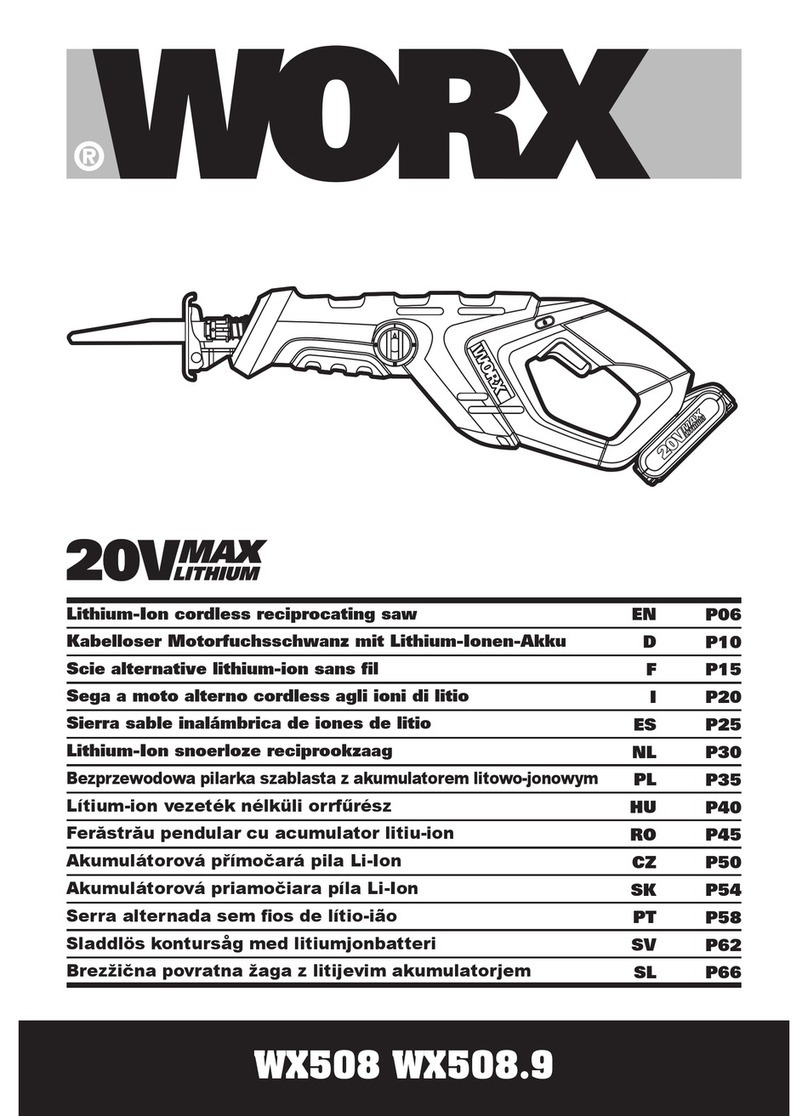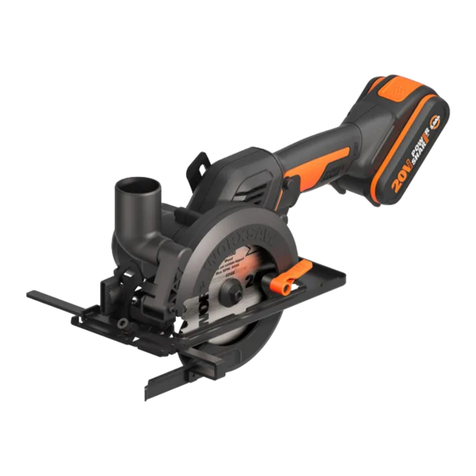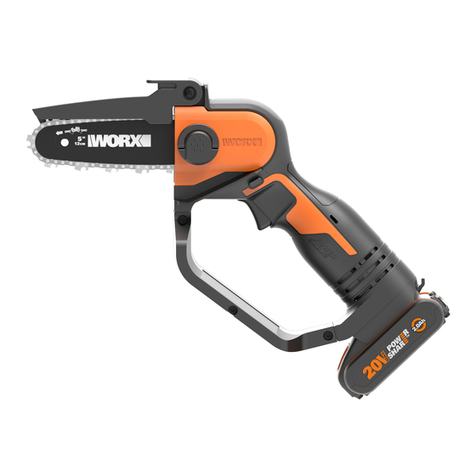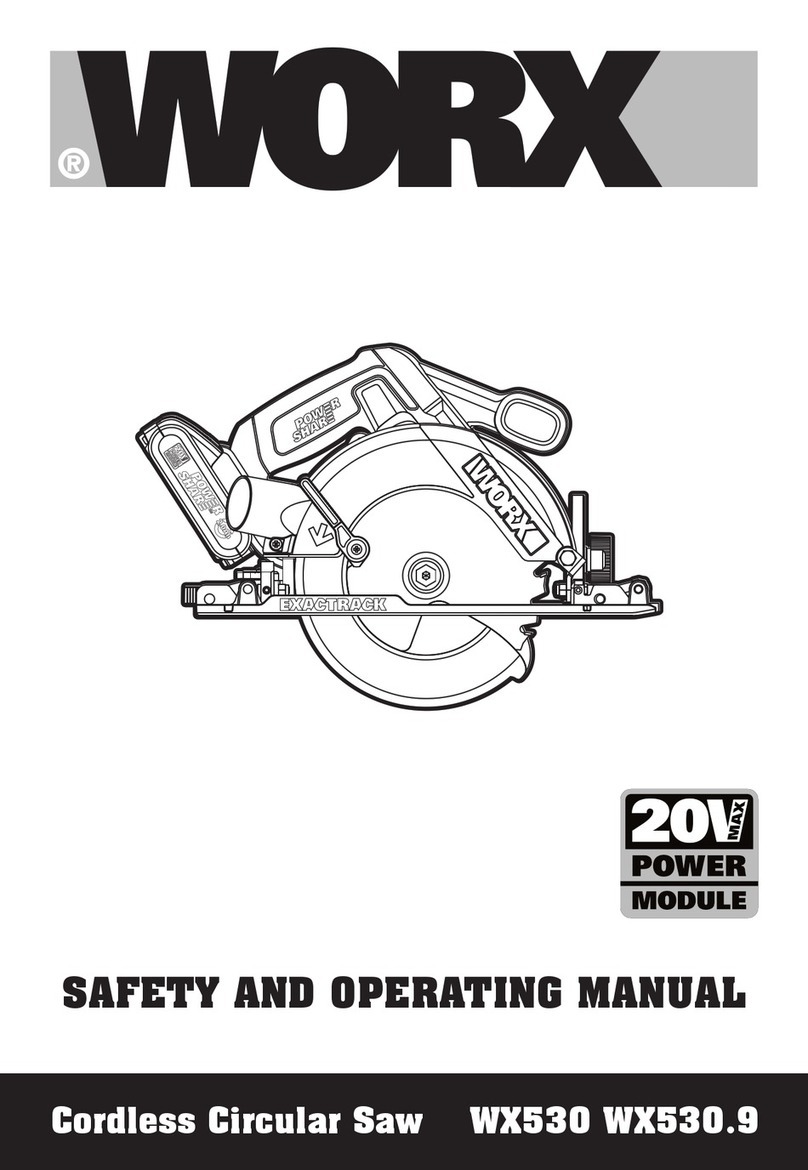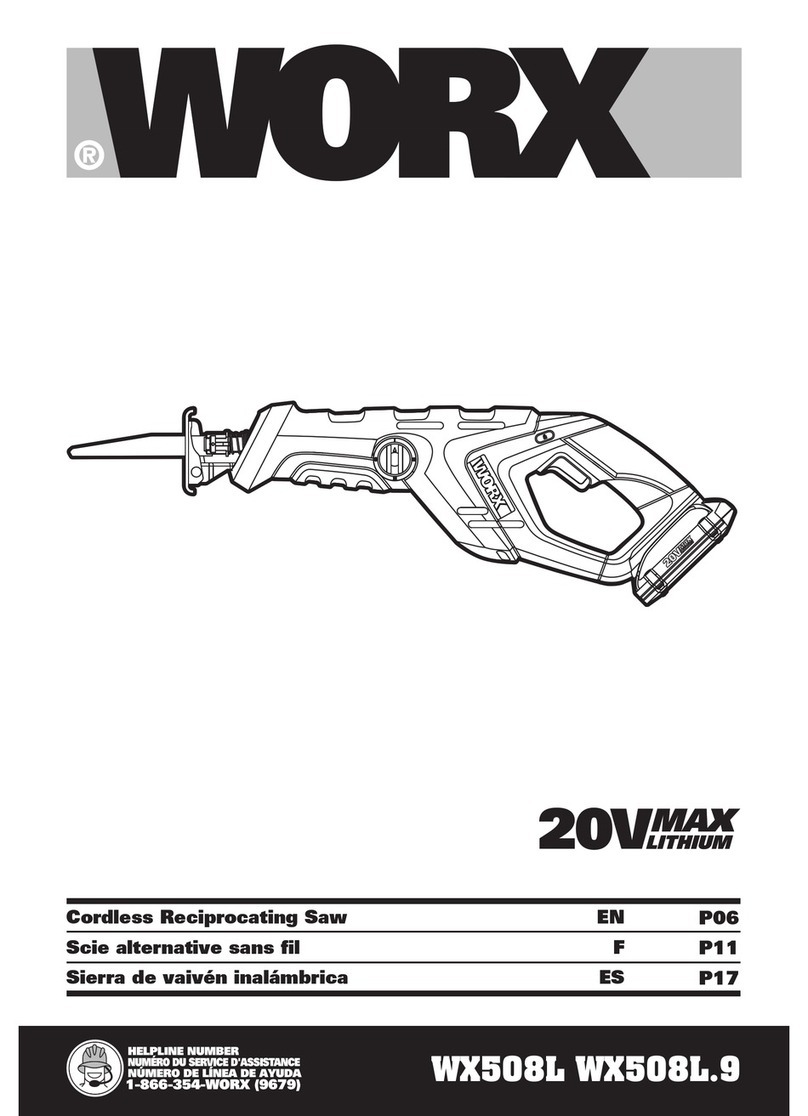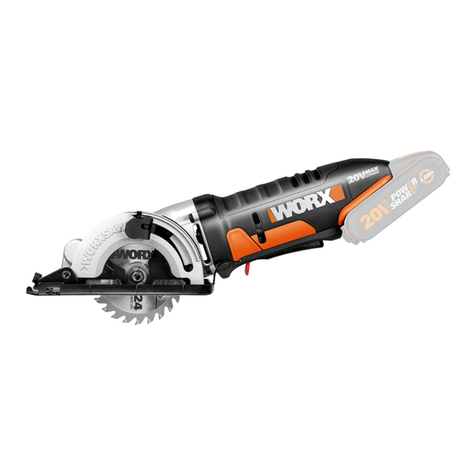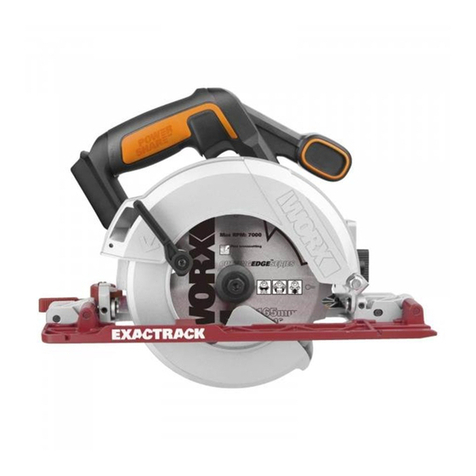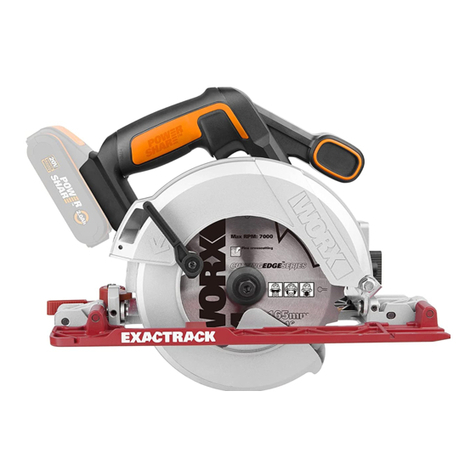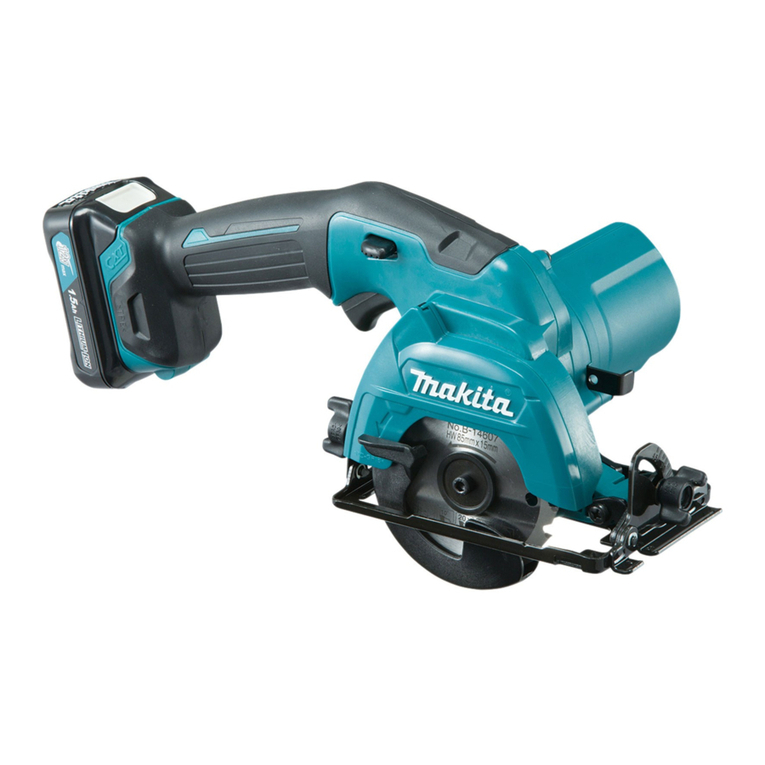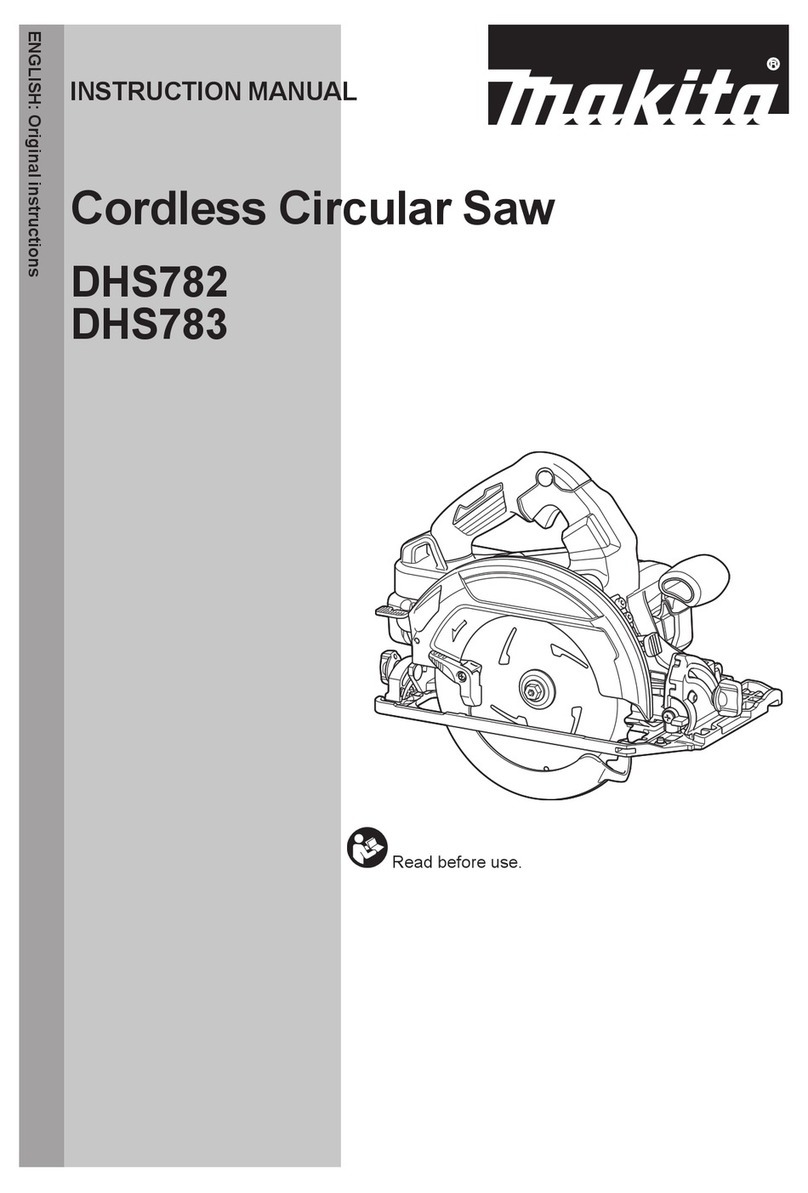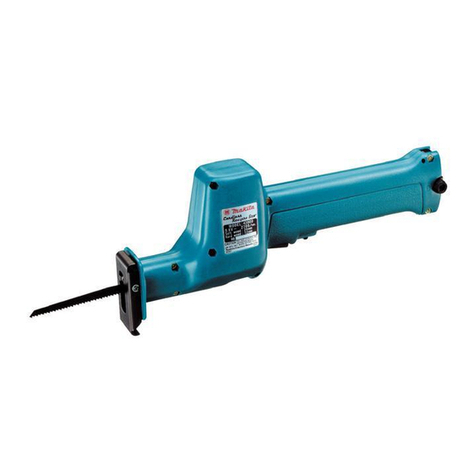
10
20V Lithium-Ion Cordless Circular Saw
WX523
WX523.9
VIBRATION INFORMATION
Vibration total values (triax vector sum) determined according to EN 60745:
Cutting wood
Vibration emission value ah,W= 5,480m/s2
Uncertainty K= 1.5m/s²
Cutting metal
Vibration emission value ah,W= 4,628m/s2
Uncertainty K= 1.5m/s²
Cutting tile
Vibration emission value ah= 6.13m/s2
Uncertainty K = 1.5m/s²
The declared vibration total value may be used for comparing one tool with another, and may
also be used in a preliminary assessment of exposure.
WARNING: The vibration emission value during actual use of the power tool can differ
from the declared value depending on the ways in which the tool is used dependant on the
following examples and other variations on how the tool is used:
How the tool is used and the materials being cut or drilled.
The tool being in good condition and well maintained
The use the correct accessory for the tool and ensuring it is sharp and in good condition.
The tightness of the grip on the handles and if any anti vibration accessories are used.
And the tool is being used as intended by its design and these instructions.
This tool may cause hand-arm vibration syndrome if its use is not adequately
managed.
WARNING: To be accurate, an estimation of exposure level in the actual conditions of use
should also take account of all parts of the operating cycle such as the times when the tool
is switched off and when it is running idle but not actually doing the job.This may significantly
reduce the exposure level over the total working period.
Helping to minimise your vibration exposure risk.
ALWAYS use sharp chisels, drills and blades
Maintain this tool in accordance with these instructions and keep well lubricated (where
appropriate)
If the tool is to be used regularly then invest in anti vibration accessories.
Avoid using tools in temperatures of 10°C or less
Plan your work schedule to spread any high vibration tool use across a number of days.
